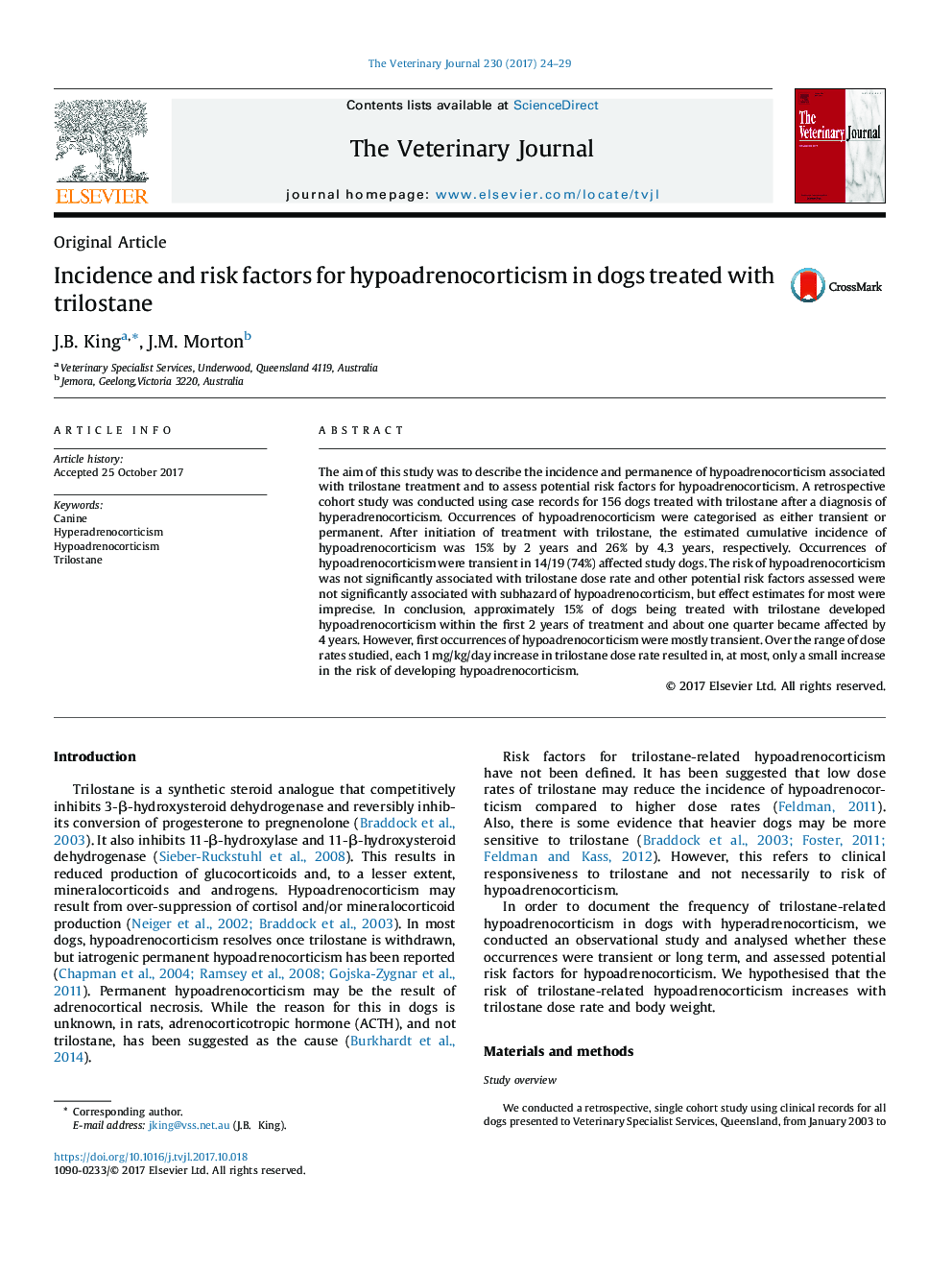| Article ID | Journal | Published Year | Pages | File Type |
|---|---|---|---|---|
| 8505005 | The Veterinary Journal | 2017 | 6 Pages |
Abstract
The aim of this study was to describe the incidence and permanence of hypoadrenocorticism associated with trilostane treatment and to assess potential risk factors for hypoadrenocorticism. A retrospective cohort study was conducted using case records for 156 dogs treated with trilostane after a diagnosis of hyperadrenocorticism. Occurrences of hypoadrenocorticism were categorised as either transient or permanent. After initiation of treatment with trilostane, the estimated cumulative incidence of hypoadrenocorticism was 15% by 2 years and 26% by 4.3 years, respectively. Occurrences of hypoadrenocorticism were transient in 14/19 (74%) affected study dogs. The risk of hypoadrenocorticism was not significantly associated with trilostane dose rate and other potential risk factors assessed were not significantly associated with subhazard of hypoadrenocorticism, but effect estimates for most were imprecise. In conclusion, approximately 15% of dogs being treated with trilostane developed hypoadrenocorticism within the first 2 years of treatment and about one quarter became affected by 4 years. However, first occurrences of hypoadrenocorticism were mostly transient. Over the range of dose rates studied, each 1Â mg/kg/day increase in trilostane dose rate resulted in, at most, only a small increase in the risk of developing hypoadrenocorticism.
Related Topics
Life Sciences
Agricultural and Biological Sciences
Animal Science and Zoology
Authors
J.B. King, J.M. Morton,
